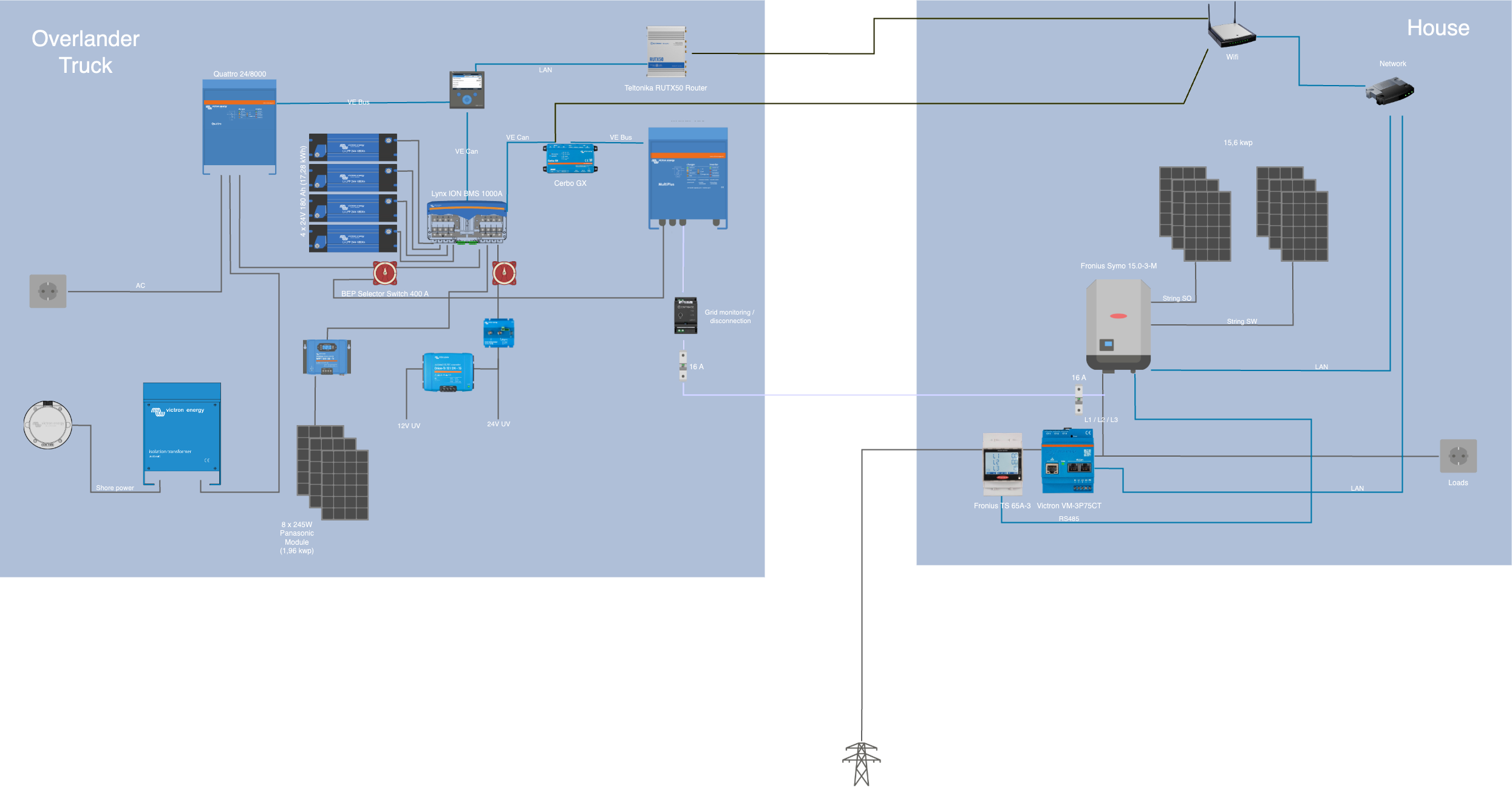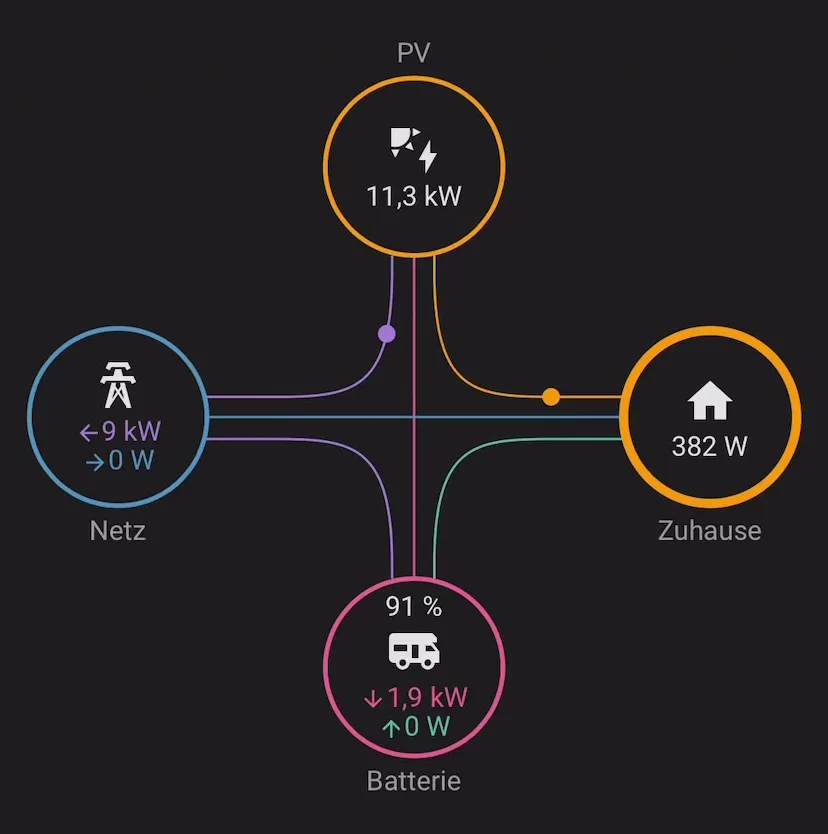Introduction#
In late 2023, I bought an overlander truck with a 17 kWh battery system as part of it’s Victron solar installation. The plan is to embark on a four-month journey in mid 2025, but until then, the truck mostly sits in the driveway as it is modified and improved.
One day, I had an idea
This article details how I built a system on top of the existing Victron setup to achieve this.
Documentation#
The foundation of this project is the Victron-based energy system, which was initially designed for the truck’s off-grid capabilities. However, integrating it with my home power system required some modifications.
Existing System#
The original setup follows the Victron Lynx Ion BMS configuration as outlined here. The main component is an 8kW Victron Quattro inverter, but unfortunately, it is not certified for use in a single-phase ESS (Energy Storage System).
Adding a MultiPlus for home integration#
To bridge the gap, I added a Victron MultiPlus 24/3000/70, which is controlled by an additional Cerbo GX. The key features of the new setup include:
Sharing the same 17 kWh battery bank between the truck’s off-grid system and the home integration setup.
Keeping both systems independent, ensuring redundancy and preventing conflicts.
Schema of the setup#

Monitoring#
Keeping an eye on energy flow and battery status is crucial. The entire system is monitored using:
Victron Remote Management (VRM)
Home Assistant
Home Assistant Integration#
To integrate with Home Assistant, I used the GX modbusTCP integration. This allows real-time monitoring of:
- Solar charging from my house
- Battery discharge when supplying power back to the home
- State of Charge (SOC) of the truck’s battery
For visualizing energy flow, I used the Power Flow Card Plus.
Charging view#
When excess solar power is available, it charges the truck’s batteries.

Discharging view#
At night or on cloudy days, the truck’s battery supplies power to the house up to the MultiPlus’ capabilities of 3kW.

Power Flow Card Plus Home Assistant configuration#
- type: custom:power-flow-card-plus
use_new_flow_rate_model: true
max_expected_power: 15600
entities:
battery:
entity: sensor.victron_vebus_activein_l1_power_227
state_of_charge: sensor.victron_battery_soc_100
invert_state: true
icon: mdi:rv-truck
grid:
entity: sensor.smart_meter_ts_65a_3_real_power
solar:
entity: sensor.symo_15_0_3_m_ac_power
show_header_toggle: false
Victron Remote Management (VRM)#
For detailed insights, historical data and status notifications, I use Victron VRM.
Conclusion#
This project has been an exciting way to repurpose an overlander truck’s power system while it sits idle in my driveway. By integrating it with my home’s solar energy system, I can:
- Store excess solar energy during the day
- Power my home at night or during cloudy weather
- Monitor everything remotely using Home Assistant and Victron VRM
This setup not only reduces reliance on the grid but also maximizes the use of my overlander truck’s battery system—all while preparing for the big 2025 adventure.
